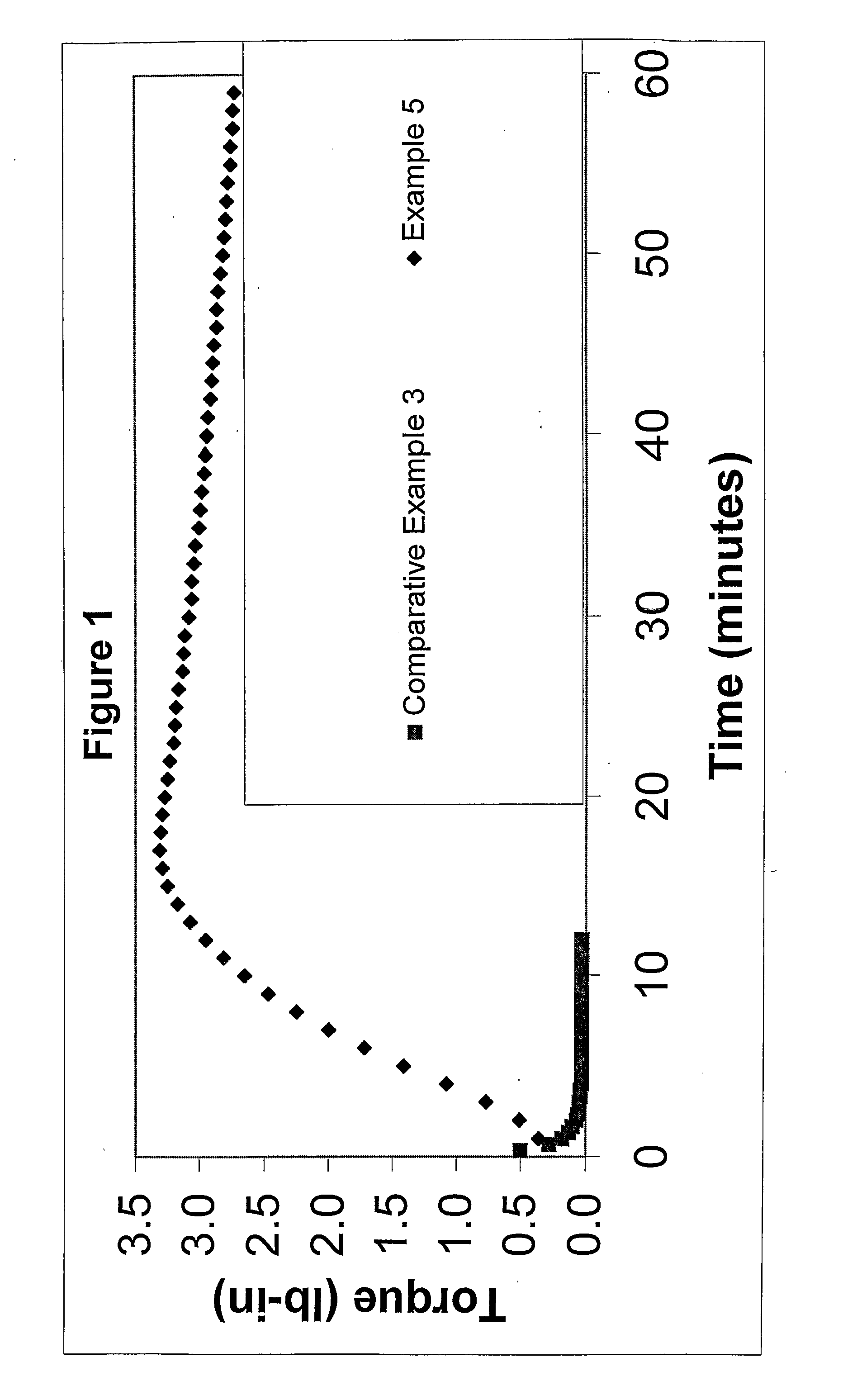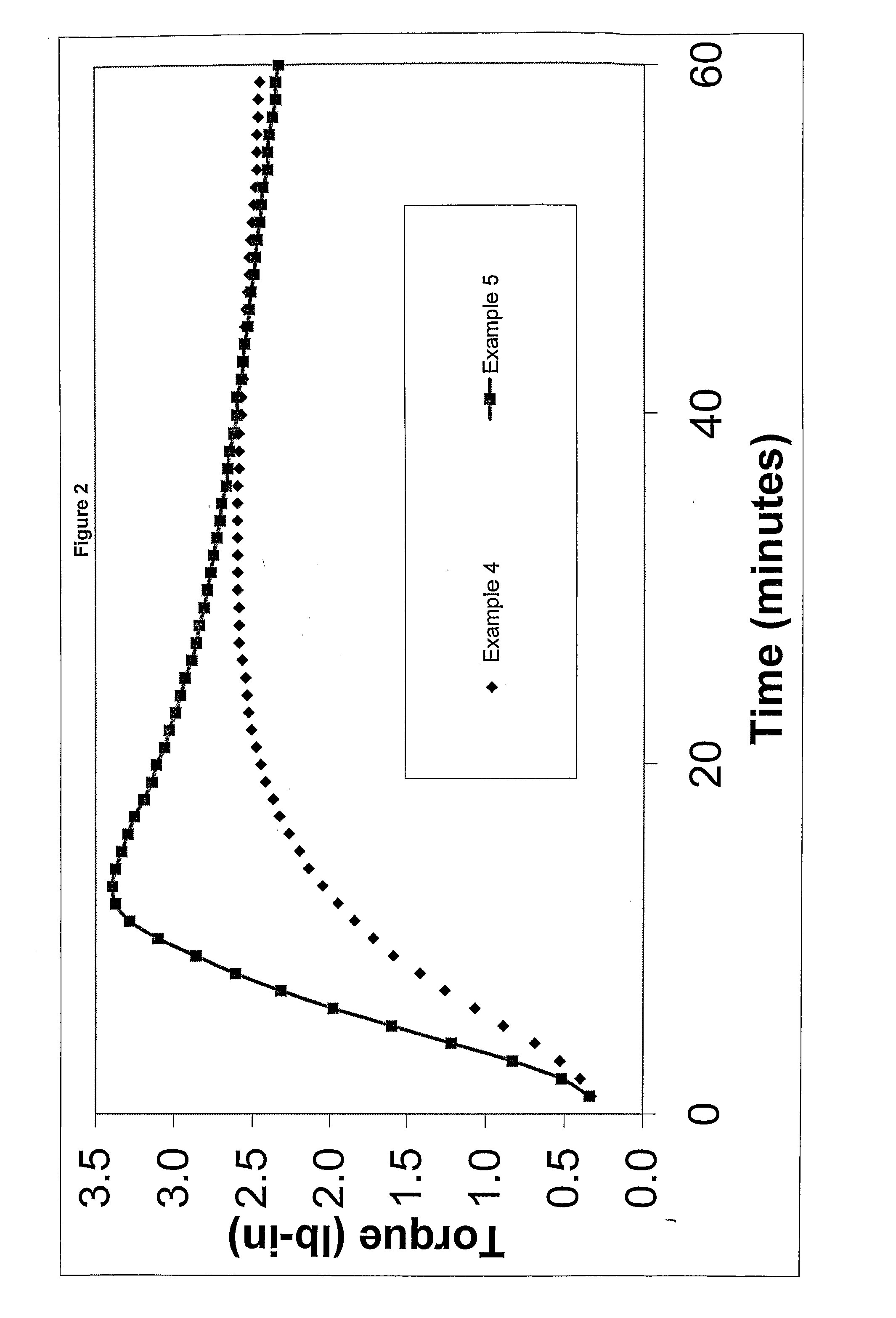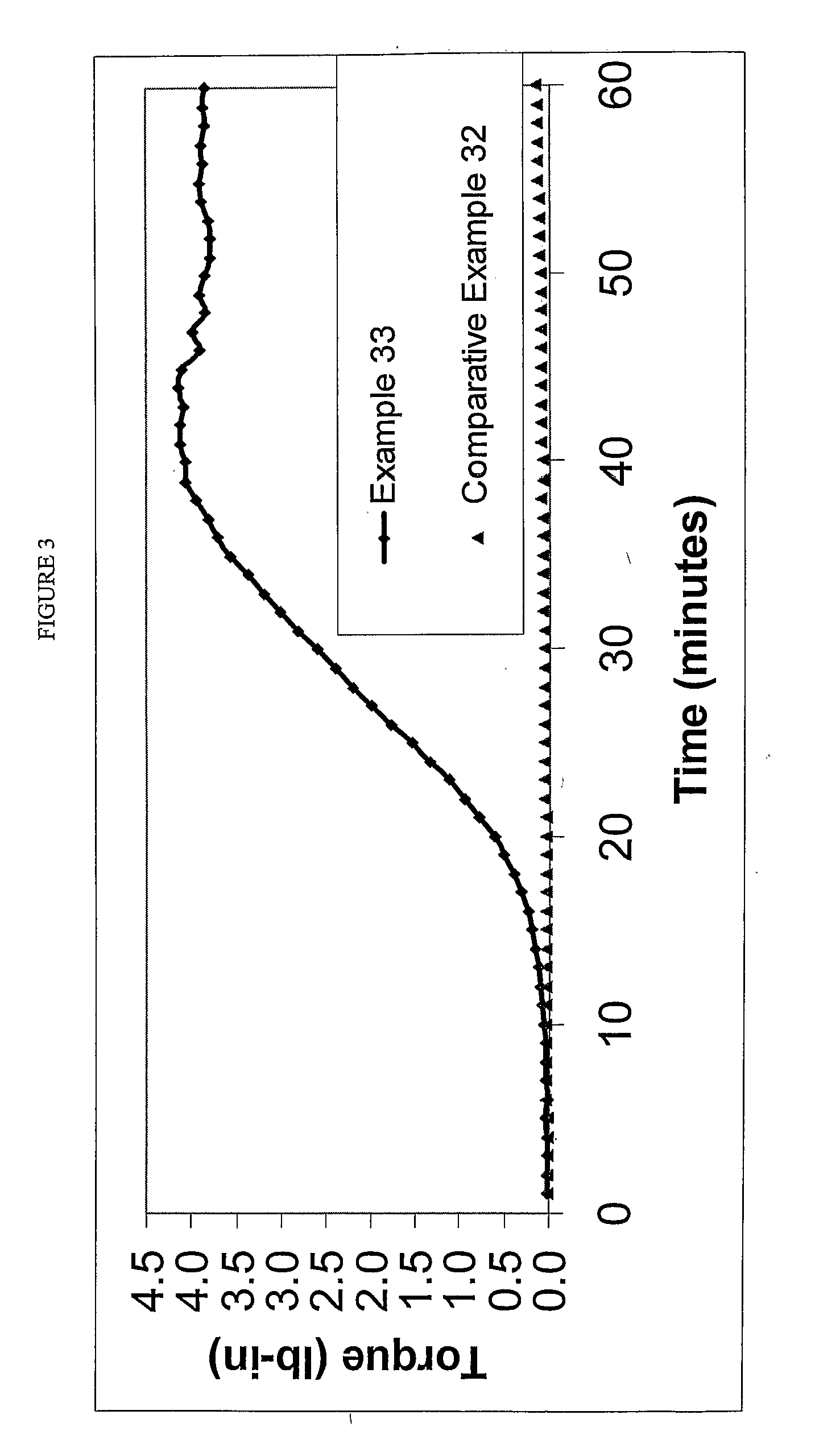Free-radical-initiated crosslinking of polymers
a free-radical and cross-linked technology, applied in the field of polymer systems, can solve the problems of cross-linked polymers with limited physical properties, adverse reactions, and polyolefins frequently subjected to non-selective free-radical chemistries
Inactive Publication Date: 2007-07-26
DOW GLOBAL TECHD
View PDF1 Cites 15 Cited by
- Summary
- Abstract
- Description
- Claims
- Application Information
AI Technical Summary
Benefits of technology
The solution achieves a significantly higher gel content and crosslinking density in the resulting polymer, resulting in improved mechanical properties and homogeneity, with applications spanning various industries including wire-and-cable, footwear, and engineering thermoplastics.
Problems solved by technology
Some of those reactions are detrimental such as degrading or carbon-carbon crosslinking.
Polyolefins are frequently subjected to nonselective free-radical chemistries.
Additionally, free-radical chemistries can promote carbon-carbon crosslinking, resulting in crosslinked polymers with limited physical properties.
Method used
the structure of the environmentally friendly knitted fabric provided by the present invention; figure 2 Flow chart of the yarn wrapping machine for environmentally friendly knitted fabrics and storage devices; image 3 Is the parameter map of the yarn covering machine
View moreImage
Smart Image Click on the blue labels to locate them in the text.
Smart ImageViewing Examples
Examples
Experimental program
Comparison scheme
Effect test
examples
[0089] The following non-limiting examples illustrate the invention.
the structure of the environmentally friendly knitted fabric provided by the present invention; figure 2 Flow chart of the yarn wrapping machine for environmentally friendly knitted fabrics and storage devices; image 3 Is the parameter map of the yarn covering machine
Login to View More PUM
| Property | Measurement | Unit |
|---|---|---|
| weight percent | aaaaa | aaaaa |
| weight percent | aaaaa | aaaaa |
| weight percent | aaaaa | aaaaa |
Login to View More
Abstract
The present invention is a free-radical carbon-FRTS-carbon crosslinkable polymeric composition. The resulting carbon-FRTS-carbon crosslinked polymer is prepared from at least one polymer which upon forming free radicals preferentially degrades or carbon-carbon crosslinks. The present invention permits suppression of the preferential reaction while permitting the polymer to be carbon-FRTS-carbon crosslinked through a free-radical trapping species. Suppressing the undesirable degradation or carbon-carbon crosslinking reaction and permitting the desirable carbon-FRTS-carbon crosslinking reaction yield a uniquely crosslinked polymer.
Description
FIELD OF THE INVENTION [0001] This invention relates to polymer systems that undergo free radical reactions, wherein introducing a unique free-radical-initiated crosslink is desirable. DESCRIPTION OF THE PRIOR ART [0002] A number of polymers can undergo free radical reactions. Some of those reactions are detrimental such as degrading or carbon-carbon crosslinking. There is a need to promote a beneficial free-radical-initiated crosslinking reaction while minimizing the impact of the detrimental reactions. [0003] Polyolefins are frequently subjected to nonselective free-radical chemistries. For example, free-radical chemistries at elevated temperatures can degrade the molecular weight, especially in polymers containing tertiary hydrogen such as polypropylene and polystyrene. Additionally, free-radical chemistries can promote carbon-carbon crosslinking, resulting in crosslinked polymers with limited physical properties. [0004] With regard to polypropylene, the free-radical degradation ...
Claims
the structure of the environmentally friendly knitted fabric provided by the present invention; figure 2 Flow chart of the yarn wrapping machine for environmentally friendly knitted fabrics and storage devices; image 3 Is the parameter map of the yarn covering machine
Login to View More Application Information
Patent Timeline
 Login to View More
Login to View More Patent Type & Authority Applications(United States)
IPC IPC(8): C08F8/30C08F8/00C08G18/00C08K5/14C08K5/34C08K5/3435C08L23/06C08L23/10C08L23/22C08L101/00
CPCC08F8/30C08K5/14C08K5/3435C08L23/10C08L23/22C08L101/00C08L2666/04C08G18/00
Inventor CHAUDHARY, BHARAT I.CHEUNG, YUNWA W.CUNTALA, RANDALL M.ESSEGHIR, MOHAMEDKLIER, JOHN
Owner DOW GLOBAL TECHD
Features
- R&D
- Intellectual Property
- Life Sciences
- Materials
- Tech Scout
Why Patsnap Eureka
- Unparalleled Data Quality
- Higher Quality Content
- 60% Fewer Hallucinations
Social media
Patsnap Eureka Blog
Learn More Browse by: Latest US Patents, China's latest patents, Technical Efficacy Thesaurus, Application Domain, Technology Topic, Popular Technical Reports.
© 2025 PatSnap. All rights reserved.Legal|Privacy policy|Modern Slavery Act Transparency Statement|Sitemap|About US| Contact US: help@patsnap.com



